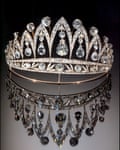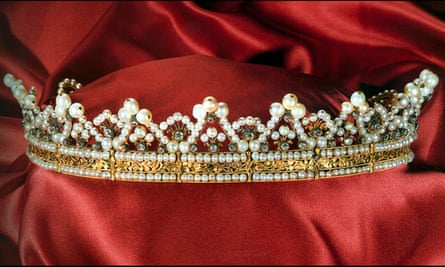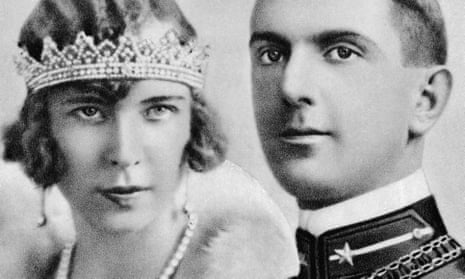Descendants of the last king of Italy have made their first formal request to reclaim the crown jewels, which for almost 76 years have been stashed in a treasure chest in a safety deposit box at the Bank of Italy amid a long-running mystery over their ownership.
The bank took delivery of the jewels, comprising more than 6,000 diamonds and 2,000 pearls mounted on brooches and necklaces worn by various queens and princesses, on 5 June 1946, three days after Italians voted to abolish the monarchy and nine days before King Umberto II, who ruled for just 34 days, was banished into exile along with his male heirs.
Umberto II had tasked Falcone Lucifero, the minister of the Royal House, to bring the jewels to Luigi Einaudi, the then governor of Bank of Italy who later became president, for safekeeping.

The jewels are said to have been the only part of the royal estate that were not confiscated by the Italian state after the monarchy was scrapped, an element that might help the descendants of the House of Savoy, including Umberto II’s son, Vittorio Emanuele di Savoia, and three daughters, Maria Gabriella, Maria Pia and Maria Beatrice, win back possession.
The family is also hoping that a cryptic note delivered alongside the treasure chest, which said the “precious” crown jewels must be “entrusted to the custody of the central cashier” and “kept at the disposal of those who have right”, will help determine that the jewels belong to them and not the state.
Sergio Orlandi, the family’s lawyer, told the Corriere della Sera newpaper: “The Savoy family will get the jewels back.”
The first “mediation meeting” between Orlandi and representatives of the Bank of Italy and the Italian government to discuss the family’s claim is taking place on Tuesday. If the parties fail to reach a solution, the family will proceed with suing the state in their attempt to repossess the jewels, according to Corriere. An informal request was already rejected by the Bank of Italy in November. “The [request for] return cannot be accepted, taking into account the responsibilities of the depositary,” lawyers for the bank reportedly said.
Until now, the family had never taken any formal action to repossess the jewels over fears they might fuel a wave of resentment. It wasn’t until 2002 that the male descendants of the House of Savoy were allowed to reenter Italy. Before returning from exile in Switzerland in 2003, Vittorio Emanuele said he would not lay claim to the crown jewels, adding that “they are no longer ours”. However, he hoped the jewels would be put on public display.

In 2006, a politician in the Piedmont region reached out to Mario Draghi, Italy’s current prime minister who at the time was governor of the Bank of Italy, asking if the jewels could be displayed at an exhibition being held as part of the winter Olympic Games in Turin, the northern Italian city that hosted the royal palace. Draghi in turn asked the government, but the jewels were never displayed.
Another factor that could support the family’s case is that the jewels are said to have been either given as gifts to various royals or were personal purchases, as opposed to being given to the family to wear for official functions over the years of the monarchy.
It is unclear how much the gems are worth, although wildly disparate estimates of €18m and €300m have been given in the past.
Umberto II spent his exile years in Portugal, never setting foot in Italy again. He died aged 78 in Geneva, where he was being treated for cancer, in 1983.
